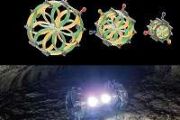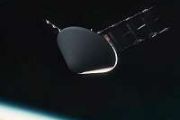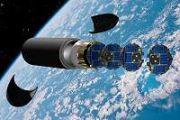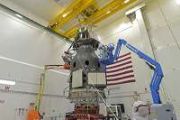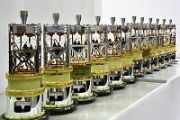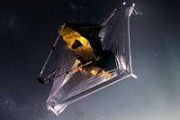
Copernical Team
Virgin Orbit to lay off 85 percent of its employees
 Virgin Orbit, the satellite launch company founded by Richard Branson, said it will lay off 85 percent of its employees, according to a filing to the US stock market regulator.
The California-based company will lay off around 675 people to reduce expenses, "in light of (its) inability to secure meaningful funding", it said in a filing to the US Securities and Exchange Commission dated Thursd
Virgin Orbit, the satellite launch company founded by Richard Branson, said it will lay off 85 percent of its employees, according to a filing to the US stock market regulator.
The California-based company will lay off around 675 people to reduce expenses, "in light of (its) inability to secure meaningful funding", it said in a filing to the US Securities and Exchange Commission dated Thursd Successful tests of EMRS project on Mars and Moon analogues surface last February
 GMV is leading one of the two Pre-Phase A studies of the European Moon Rover System (EMRS). This project focuses on finding the best solution for a potential future European rover, with the ability to carry out different missions in different places on the lunar surface.
As such, the GMV's EMRS team (OHB, AVS, HTR, DLR) has selected a modular approach, allowing different capabilities to be
GMV is leading one of the two Pre-Phase A studies of the European Moon Rover System (EMRS). This project focuses on finding the best solution for a potential future European rover, with the ability to carry out different missions in different places on the lunar surface.
As such, the GMV's EMRS team (OHB, AVS, HTR, DLR) has selected a modular approach, allowing different capabilities to be MOXIE Celebrates 2 Years on Mars: Discoveries and Work Left To Do
 MOXIE, the Mars Oxygen In-Situ Resource Utilization Experiment, is a Perseverance Rover payload on Mars. MOXIE uses a scroll pump to capture the thin, carbon-dioxide dominate air of Mars and flows it into a Solid Oxide Electrolysis (SOXE) stack. The SOXE performs an electrochemical process that strips oxygen atoms off the carbon dioxide. This oxygen is a valuable resource for rocket propellant o
MOXIE, the Mars Oxygen In-Situ Resource Utilization Experiment, is a Perseverance Rover payload on Mars. MOXIE uses a scroll pump to capture the thin, carbon-dioxide dominate air of Mars and flows it into a Solid Oxide Electrolysis (SOXE) stack. The SOXE performs an electrochemical process that strips oxygen atoms off the carbon dioxide. This oxygen is a valuable resource for rocket propellant o NASA's Perseverance Collects First Mars Sample of New Science Campaign
 NASA's Perseverance rover cored and stored the first sample of the mission's newest science campaign on Thursday, March 30. With each campaign, the team explores and studies a new area. On this one, the rover is exploring the top of Jezero Crater's delta. Perseverance has collected a total of 19 samples and three witness tubes, and it recently deposited 10 tubes as a backup cache on the Martian
NASA's Perseverance rover cored and stored the first sample of the mission's newest science campaign on Thursday, March 30. With each campaign, the team explores and studies a new area. On this one, the rover is exploring the top of Jezero Crater's delta. Perseverance has collected a total of 19 samples and three witness tubes, and it recently deposited 10 tubes as a backup cache on the Martian The Role of a Rover, a Lander, and Helicopters in the Unique Shape of the First Sample Depot on Mars
 NASA's Perseverance rover is now exploring the upper surface of the Western Fan in Jezero crater, having completed a very successful one Mars year Prime Mission. It has sealed 22 of the 43 sample tubes it brought to Mars and created the Three Forks Sample Depot where it deposited 10 of these samples.
The Mars Sample Return mission aims to bring some of the samples that Perseverance collect
NASA's Perseverance rover is now exploring the upper surface of the Western Fan in Jezero crater, having completed a very successful one Mars year Prime Mission. It has sealed 22 of the 43 sample tubes it brought to Mars and created the Three Forks Sample Depot where it deposited 10 of these samples.
The Mars Sample Return mission aims to bring some of the samples that Perseverance collect ESA detects four-leaf clovers from space

ESA is excited to announce a revolutionary new technology that could bring luck to people all over the world: four-leaf clover detection from space.
Sustainable space exploration will harness microbes

Richard Branson's Virgin Orbit slashing 85% of its workforce

GENESIS of a new Earth: join ESA’s Earth measurement mission

The idea behind ESA’s GENESIS mission is simple: a fixed framework is needed to chart the relative positions of locations across our planet, and satellites in orbit serve as the foundation of this framework. Fix a satellite’s own position in space accurately enough and you can measure Earth under it much more precisely too.
Shaun the Sheep is baaa-ck
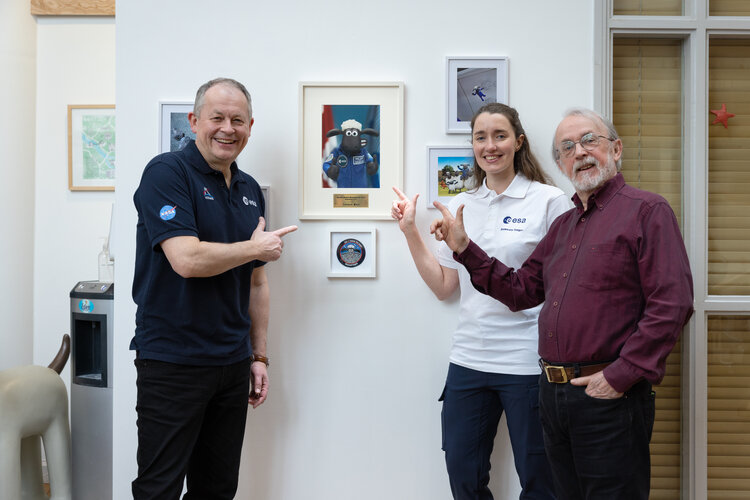 Image:
Shaun the Sheep is baaa-ck
Image:
Shaun the Sheep is baaa-ck 







